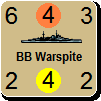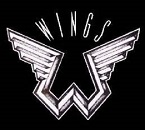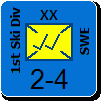warspite1
Posts: 41353
Joined: 2/2/2008
From: England
Status: offline

|
14th - 17th Feb 1940 (The Altmark Incident)
We came across the supply ship Altmark previously (see posts 25, 76, 115 and 182) due to her support role for the surface raider Graf Spee. She now makes a re-appearance, playing a key part in an episode that went a long way to crystalising Adolf Hitler’s thoughts on Norway.
Altmark, commanded by Kapitan Heinrich Dau, and crewed by 133 officers and men, had put to sea in August 1939 to support the Graf Spee's proposed commerce raiding activities in the South Atlantic once war broke out. She supported the German pocket-battleship during the latter's maiden - and as it turned out, only - voyage as a surface raider.
After the Graf Spee was scuttled Altmark - with around 300 merchant sailors captured by Graf Spee aboard - initially remained in the South Atlantic as Dau suspected that the Royal and French Navies would be searching for her. Only toward the end of January, with supplies running low, did Dau decide to make a dash for home. On her way home she was disguised sometimes as a Norwegian vessel and on other occasions as an American vessel, and she was able to pass undetected through the Northern Patrol line south of Iceland in mid-February.
By the 14th Altmark had reached Norwegian waters and was less than 2-days from reaching Germany. There, she was spotted (but not yet identified) by lookouts at a coastguard station at Fosen. The Norwegian torpedo boat Trygg was ordered to intercept this mystery ship and see what she was up to. Trygg's commander, Lt Franz Munster ordered his first officer, Fenrik Evju, to board the ship and investigate.
Evju was told that Altmark was travelling back to Germany from the Far East where she had been tasked with purchasing oil. Altmark's crew had concealed her weapons and so, seeing nothing out of the ordinary, and with Dau and his officers able to answer Evju's questions convincingly, at around 1800hrs Altmark was given permission to sail south within Norwegian territorial waters.
However a British ship, Helmond, saw Altmark (although she too did not know it was her) and her captain became suspicious. He reported his sighting to the British authorities at Trondheim - who immediately informed the Admiralty. They guessed exactly who and what this ship was... But it was not just the British who identified her. The Norwegian Commander in Chief of the 2nd Sea Defence District, Rear-Admiral Carsten Tank-Nielsen, also realised the true identity of the ship after he received the report from Trygg.
Tank-Nielsen ordered Niels Simensen, commanding a second torpedo boat - Snogg - to board Altmark once again. By now it was around 2130 hrs and once again, Dau had managed to answer all questions put to him to the Norwegians satisfaction and no detail examination of the ship was carried out before the Norwegian boarding party left the ship. Tank-Nielsen though was not happy. He was all too aware that his country had to be seen to be abiding by international rules in order to maintain their neutral status. As a result, at around 2315 hrs on the 15th February, a third boarding was ordered.
The result was no different and so Tank-Nielsen decided to take a closer look himself. He sailed out to Snogg and questioned her captain about exactly what questions were asked and what examination of the ship had been carried out. When he realised that no one had actually made any examination below decks he ordered a fourth boarding of the German ship. Dau was told that either he allowed a full inspection of his ship to be undertaken or he must leave Norwegian waters. He choose the latter, but asked that he be allowed to wait until dusk before leaving for international waters.
Things now started to heat up. Against regulations, Dau used his radio to get a message to the German Embassy in Oslo to protest at the Norwegian actions. This message was intercepted and Dau was reminded that use of the radio was not permitted while in Norwegian waters.
Meanwhile, while all this was going on, the prisoners down below had not been idle. When the ship was first stopped the prisoners tried to raise the alarm by making as much noise as possible but apparently were not heard. However, on this fourth stoppage they tried again and this time were heard by the boarding party. Tank-Nielsen now realised that there were prisoners aboard the ship, but he did not want to take action against Altmark without authorisation from the Norwegian Government or the head of the navy.
The commander of the Norwegian navy, Admiral Henry Diesen, after consulting with members of the Government, decided that the best thing would be for Altmark to be allowed to continue on her way - through Norwegian waters - so she would no longer be Norway's problem. Poor Tank-Nielsen was reprimanded for doing his job. Altmark continued south and by midday on the 16th was south of Stavanger.
Meanwhile, on the 15th the sighting report had reached Captain Philip Vian, the commander of the 4th Destroyer Flotilla aboard HMS Cossack. Along with fellow destroyers Intrepid, Ivanhoe, Nubian and Sikh, and the attached light cruiser Arethusa, the 4th Destroyer Flotilla went in search of the Altmark. Vian split his forces into two, and the northern force - containing Arethusa, Intrepid and Ivanhoe - was closest to hand when Altmark was spotted by a reconnaissance flight in the early afternoon of the 16th.
The three British ships closed Altmark but were kept at bay by her two Royal Norwegian Navy escorts, the torpedo boats Skarv and Kjell. A landing party was actually launched but was unable to get a line onto the German tanker. The British then fired warning shots - but could not set their machine gun sights onto Altmark's bridge as there were two Norwegian pilots aboard (placed their earlier to help the Altmark steer a course though the confined waters of the Norwegian coast). Ultimately Dau ordered his ship into Jossingfjord to try and escape his tormentors. The Fjord was half frozen over but Altmark took part in some impromptu ice-breaking to get as far into the fjord as practicable. She was followed in by the two Norwegian naval vessels which blocked the British destroyers from entering.
It was now just after 1800hrs, and Vian asked that the commander of the Kjell, Lt Finn Halvorsen, to meet him aboard HMS Cossack. Vian told the Norwegian that he wanted the Altmark searched as there were British prisoners aboard. Halvorsen stated that the ship had already been searched and furthermore, he wanted assurances from Vian that there would be no further encroachment into Norwegian waters and ordered Vian and his destroyers to leave. The meeting ended with Halvorsen agreeing to search Altmark once more and Vian ordering his ships to open sea where he would seek further clarification from the Admiralty as to the next steps he should take.
Incredibly, Rear Admiral Johannes Smith-Johannsen - commander of the 1st Sea Defence District, under whose jurisdiction Altmark now came - at this point gave orders that Altmark was not to be searched and that if the British entered the fjord they should be stopped by force. This, despite the fact that Altmark was no longer passing through Norwegian waters toward home, but had actually entered a Norwegian fjord.
At this point events moved away from Jossingfjord and the Altmark. The British submarine HMS Seal was ordered to lay a 3-mile long net near the fjord. The thinking was that if the Altmark tried to leave the fjord she would become entangled on the net. The net did catch a German ship - although it was not Altmark, still safely holed up in the fjord watched over by the two Norwegian torpedo boats. Instead it was the Baldur, a merchant vessel carrying iron ore from northern Norway. The destroyer Ivanhoe was ordered to intercept the German ship, hopelessly entangled and drifting out to sea. Two warning shots were fired by the destroyer before her crew scuttled her by setting fire to the ship. She sank that night after her crew were picked up by the British.
Back to the Altmark, and matters were coming to a head. Having received Vian's request for orders, Winston Churchill, after a brief discussion with the Foreign Secretary, gave Vian clear orders. Unless the Norwegians agreed to escort Altmark to Bergen for a proper inspection, Vian was to board the ship, liberate the prisoners and the ship was to be left. And so, at around 22:45hrs with a boarding party of around 45 sailors, Vian re-entered the fjord aboard Cossack (the other ships were ordered to remain outside Norwegian waters).
Once more Halvorsen found himself aboard HMS Cossack protesting the British presence and ordering Vian to leave. Vian countered that he was under orders to search the ship and Halvorsen was welcome to accompany him. Seeing a new ship in the fjord Dau ordered the Altmark deeper into the fjord and was followed by Cossack. Suddenly Altmark reversed course and rammed the British destroyer. Dau decided against scuttling the ship - probably as this would be a death sentence to the prisoners below.
With the ships largely locked together the boarding party jumped onto Altmark. What exactly happened next is disputed but firing broke out. Dau initially said that no German was carrying weapons, but given there were 300 prisoners aboard and being guarded, this was clearly nonsense. He then said that there were some weapons distributed, but no German fired that night. The Norwegians supported that version of events. However, for whatever reason a firefight did break out and eight German sailors died -despite the best efforts of members of Cossack crew that entered the water to assist a German that had been shot.
Down below, 299 prisoners were found by the boarding party and released. The Germans advised the British that scuttling charges had been set on the Altmark. Rather than take any chances, Vian ordered the prisoners be loaded onto the destroyer as quickly as possible so that they could exit the fjord. The Germans were not taken prisoner and the ship was left where she was. Cossack got underway around midnight, the damage from the ramming did not impair her sea-worthiness, and she was back in Scotland on the 17th.
So what were the rights and wrongs of this episode? Well it seems likely that the Royal Navy had no grounds to enter territorial waters, but that said, Dau lied to the Norwegians about the status of his ship, he used the radio while in Norwegian waters, he lied about being unarmed and also about the prisoners. The British were also upset at the inadequate searches that were carried out by the Norwegian Navy. Ultimtely there was no long term damage to British / Norwegian relations, but in Berlin, Adolf Hitler was taking a dim view of Norwegian efforts to maintain its neutral status.....
Altmark was one of a class of five supply ships was built during the thirties, known as the Dithmarschen-class. These 'Troßschiffe' were vital to the Kriegsmarine as they allowed their surface raiders to remain at sea for lengthy periods, once they had broken out into the North Atlantic and beyond. They were able to provide essential items including fuel (c.9,000 tons), ammunition (1,000 tons), general supplies (900 tons). They were also able to take crews captured by the surface raider. We shall come across the Altmark again later in this thread.

Captain (D) Philip Vian (pictured in Australia in 1944) was commander of the 4th Destroyer Flotilla at the time of the Altmark incident. He ended the war as a Rear-Admiral in command of the 1st Aircraft Carrier Squadron

The Tribal-class destroyer HMS Cossack

Sources:
Conway’s: All The World’s Fighting Ships 1922-1946
The Gathering Storm (Geirr H Haarr)
Chronology of the War at Sea 1939-45 (Jurgen Rohwer)
 Attachment (3) Attachment (3)
< Message edited by warspite1 -- 3/25/2017 8:58:19 PM >
_____________________________
England expects that every man will do his duty. Horatio Nelson October 1805  |
 Printable Version
Printable Version




























 New Messages
New Messages No New Messages
No New Messages Hot Topic w/ New Messages
Hot Topic w/ New Messages Hot Topic w/o New Messages
Hot Topic w/o New Messages Locked w/ New Messages
Locked w/ New Messages Locked w/o New Messages
Locked w/o New Messages Post New Thread
Post New Thread